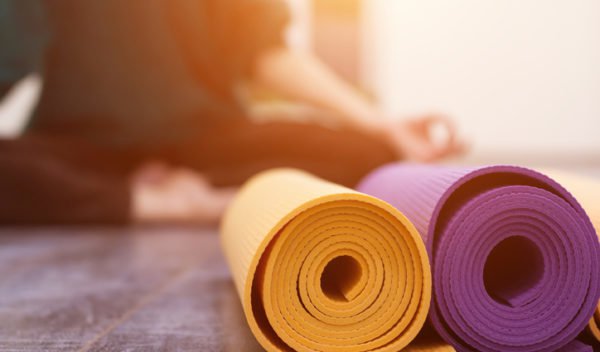Articles, Brie Galicinao, In the Press, Resources, Share Your Story, Tiffany Cruikshank, Yoga Medicine® News
How to Open a Yoga Studio… and Succeed
5 Experts’ Best Advice on How to Open a Yoga Studio—& Succeed
Ever wonder what it takes to start your own yoga studio and make it successful? Follow along as we trail an enthusiastic pair of yogis through their business journey.
Brie Galicinao and Alysia Hendricks are on the cusp of opening a yoga studio in Santa Barbara, California. But, setting up all the business details has been challenging.
“It was tough to even get started. Visiting a bank with our financials, submitting a letter of intent on a lease, looking into copyrighting, and contacting contractors and equipment providers,” says Galicinao. “Even researching and looking at spaces for the studio took us a whole year”. (As of press time, they’re still in lease negotiations with a goal of opening by April 2018.)
Galicinao and Hendricks are Yoga Medicine teachers trained by Tiffany Cruikshank, certified personal trainers through the National Academy of Sports Medicine, and softball coaches at the University of California–Santa Barbara. They’ve both wanted to open their own yoga studio for years, but the idea became more appealing after they each used yoga to recover from head injuries (softballs are not exactly soft).
The Inspiration
Two years ago, Hendricks was pitching in a batting cage when a line drive ricocheted off the cage and smacked her on the forehead. She was diagnosed with a concussion. And, later, post-concussion syndrome. She suffered debilitating symptoms that persisted for months. “I had severe daily headaches, nausea, vertigo, and slow cognitive functioning,” Hendricks says, “I think the toughest part was having no guidance for how to get better and no timeline for my recovery.
Doctors were limited with their resources, insurance companies wanted objective medical evidence or test results, and my friends didn’t realize how much I was suffering because they couldn’t visibly see anything wrong with me.” Hendricks, a dedicated yogi, started a post-injury routine with some breathing exercises and a couple of seated postures, slowly building back up to an hour-long practice.
“Yoga was the only physical activity I could do for six months,” she says. “I was able to breathe into spaces where I was holding a lot of tension, slow my heart rate, and reduce the pain of my headaches,” she says. “Pranayama, in particular, gave me a starting point, or reset. It helped me be OK with the ups and downs of recovery as I tested my limits, including retraining my brain to process information and speak at the cadence I was capable of prior to the injury.”
Galicinao had a similar experience last spring after she suffered a concussion during softball practice. “Yoga was instrumental to my recovery,” she says. “It helped reduce my irritability, fatigue, and sensitivity to light and sound. All of which was as particularly difficult to manage when coaching an outdoor sport.”
Bridging the Gap for Head Injuries
Hendricks and Galicinao are now determined to bring yoga to other athletes suffering from head injuries. Their studio will also serve those looking to improve their mental functioning and overall brain health. During their own recoveries, they realized that there aren’t a lot of resources that bridge the gap between the medical field (neurologists and others who treat brain injuries) and getting athletes back to being active, so they believe they will be poised to fill a real need.
Armed with their decades of fitness knowledge, their deepening connections to the medical professionals who treat brain injuries in Santa Barbara, and Hendricks’s extensive business background (she’s worked in financial roles for Apple and the Tiger Woods Foundation), the pair plans to open MindShift Studio. Their studio will offer a combo of yoga, cycling, and specialized strength and conditioning training. The yoga classes will be centered on ways to improve cognitive performance through balance poses and breathwork. And they plan to offer indoor cycling in their space since they consider it a safe way to get a cardio workout and bring blood to the brain without flaring up post-concussion symptoms—mainly because your head stays relatively still on a stationary bike as opposed to the up-and-down bouncing during running or the balancing act of cycling on the road.
While they’re confident in their purpose, Galicinao and Hendricks know that they have a lot to learn when it comes to succeeding with their studio. To help nudge them along, Yoga Journal set them up with some business-savvy yoga mentors who took a glance at their preliminary business plan and offered some guidance on next steps. Read along for an inside look at what it takes to launch a studio, and for best practices when going into the business for yourself.
Step 1: Establish your business vision & strategy
Click here to keep reading.














